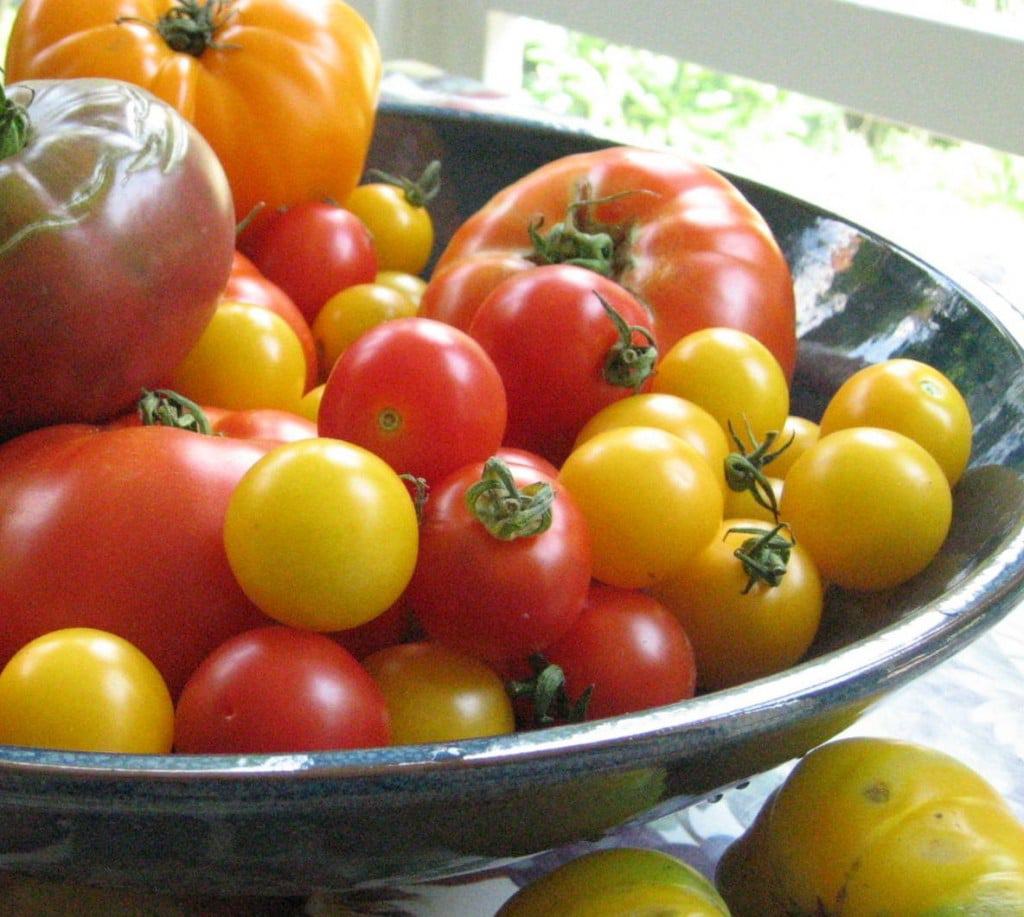
Tomatoes are notoriously sensitive to temperature and weather changes, more so than the plants. In spring, a little tomato plant will take capricious winds in stride, and even ride out a crisp (but not frosty) night of low temperatures. But the fruit are another matter; they’re vulnerable to fluctuating day and night temperatures in late summer, as well as seasonal downpours.
There was one very chilly night this week when the temperature fell to 10°C (50°F), and several nights when it lingered near 15°C (60°F). The following mornings, the tomatoes felt as if they had been refrigerated. This isn’t unusual at summer’s end, but it does signal a change of season and a change in ripening tomatoes. Here are tips for late tomatoes:
• There aren’t enough warm growing days ahead to ripen newly emerging fruit, so stop the growth of tomato plants by pinching out all growing tips (from the main vine stems, and any suckers present). This will force energy into enlarging and ripening the remaining fruit.
• Remove remaining tomatoes that are immature and less than half their expected size. As a guide, the first six fruit trusses are the best the plant will produce. Any other trusses left on the vine may not have time to ripen.
• Remove leaves near ripening tomatoes to allow sunlight to reach the fruit and increase air circulation to help prevent disease. If possible, cover the plants with a sheet of plastic during heavy downpours (remove the covering promptly when rain is over) to prevent saturating the soil in their root zone. Excessive water uptake in late summer results in decreased flavour and split fruit. Water the plants somewhat less, keeping their soil drier than during their rapid growth phase in early summer.
• Monitor ripening tomatoes every day, harvesting them when they’re coloured, but still firm and not fully ripe. This will keep them from becoming damaged from weather or animals, and prevent potential infection from fungus spores that are rapidly increasing in the garden. (Fully ripe tomatoes are soft and thin-skinned; their interior cells break down, releasing flavourful sugars and fluids that are an ideal environment for pathogen growth.)
• If frost threatens, remove all the tomatoes. To ripen tomatoes indoors, put them in a paper bag with a banana. The banana will release ethylene gas, which encourages tomatoes to ripen and produce their characteristic balance of acidic and sweet flavour. Or get out the pan and make some fried green tomatoes!


This is very helpful. I am only sorry I gave my tomatoes a good watering yesterday!
This year I planted only cherry tomatoes. Do the same rules apply, or do they need less time to ripen because they are smaller?
Hello Polly.
You raise an interesting question. I think you can let trusses of immature cherry tomatoes stay longer on the plants, especially in light of the returned warm temperatures we’re experiencing across Ontario. They might get enough warm days to grow and ripen. If the nights turn cool, the tomato skins will tend to thicken, and you might notice that. But even thick-skinned cherry tomatoes can be cooked up to make a lovely sauce!
— Judith